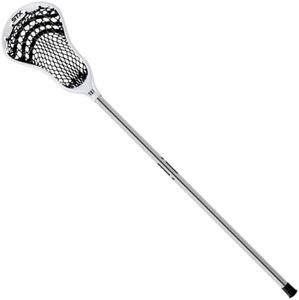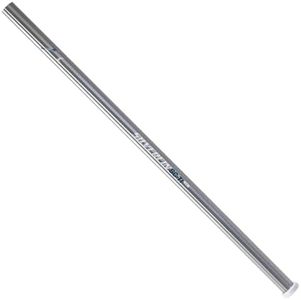We Use CookiesWe use cookies to enhance the security, performance,
functionality and for analytical and promotional activities. By continuing to browse this site you
are agreeing to our privacy policy
10 Best Lacrosse Shafts
From leading brands and best sellers available on the web.Buying Guide for the Best Lacrosse Shafts
Choosing the right lacrosse shaft is crucial because it directly affects your control, comfort, and overall performance on the field. The perfect shaft should feel like an extension of your arm—balanced, appropriately sized, and tailored to your playing style and position. Understanding the most important features will help you select a shaft that maximizes your game and supports your development as a player.MaterialThe material of a lacrosse shaft largely determines its weight, strength, and durability. Common materials include aluminum, scandium, titanium, composite, and alloys. Aluminum shafts are lightweight and affordable, making them popular for beginners, but they might bend more easily. Scandium and titanium offer a balance between weight and strength—ideal for players who need both durability and speed. Composite shafts use advanced materials (like carbon fiber); they're often the lightest and provide good shock absorption but might feel different from metal. If you prioritize speed and handling, lighter materials can be a good fit, while defensive players or those who want extra durability might go for something heavier and stronger.
LengthLacrosse shafts come in different standard sizes, usually matched to the position you play. Attackers and midfielders typically use shorter shafts (around 30 inches), offering greater control and maneuverability, while defenders and long-stick midfielders need longer shafts (about 60 inches) for greater reach and checking capability. Goalies use a shaft length that usually falls in between. Picking the right length depends mostly on your position and playing style—shorter for agility and ball handling, longer for reach and defensive leverage.
WeightThe weight of the shaft can affect your stick handling speed and shot power. Lighter shafts make for faster stick movement, helpful for attackers and midfielders who rely on quick passes and shots. Heavier shafts offer more strength and can deliver tougher checks, which suits defenders best. Your choice hinges on whether you value speed and finesse over power and checking ability. Test different weights to find what feels well-balanced and comfortable for your grip and playing habits.
Shape/GripLacrosse shafts are available in various shapes or 'profiles,' such as octagonal, concave, or traditional round, which can affect hand comfort and grip security. Many shafts include additional grip textures or coatings to help your hands stay in place, especially in wet conditions. A shape or grip that feels natural will decrease hand fatigue and give you better control. Try gripping different shapes to see which feels most comfortable and fits your playing technique.
FlexFlex, or flexibility, refers to how much the shaft bends under pressure. More flexible shafts can add extra whip to your shot, providing additional power, but may sacrifice some stability. Stiffer shafts give a consistent feel and are often preferred by defenders. Your right balance depends on your position—attackers may prefer some flex for shooting, while defenders usually prefer stiffness for reliability during checks and passes.
DurabilityDurability is a measure of how well the shaft holds up to repeated use and hard play. More durable shafts are less likely to dent, bend, or break but may be heavier. Position and style play a role in this choice; defenders face more stick-to-stick contact and typically need higher durability, while offensive players may trade off some toughness for a lighter, more responsive stick. Look for a shaft that can withstand your level of play without adding unnecessary weight.











